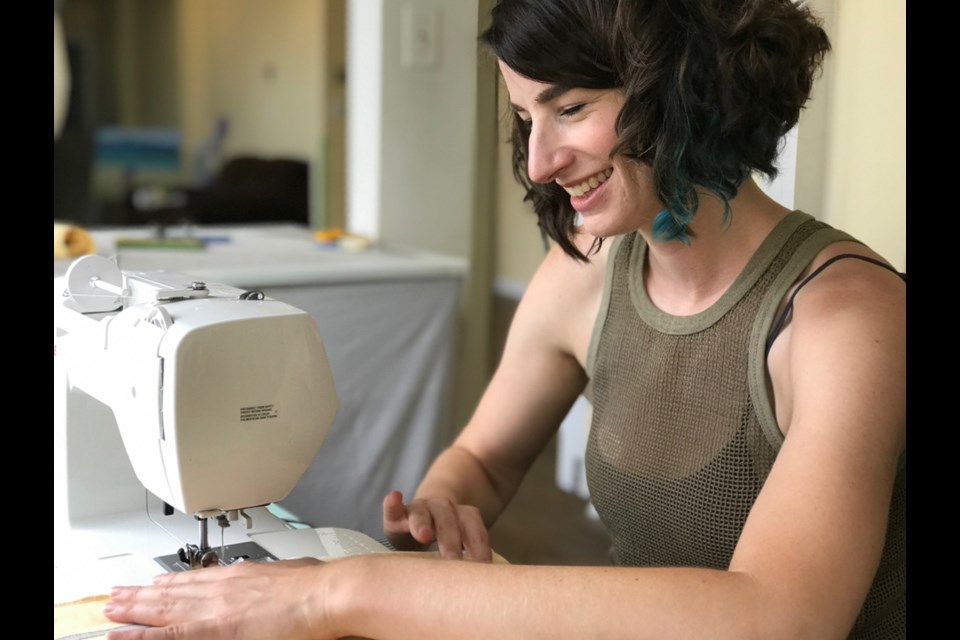Art for arts sake, with a side of style and function thrown in for good measure, can sum up more than a few artistsŌĆÖ work in Squamish. The town is home to countless visual artists whose creations beautify their surroundings in a way that is, at times, quite indispensable.
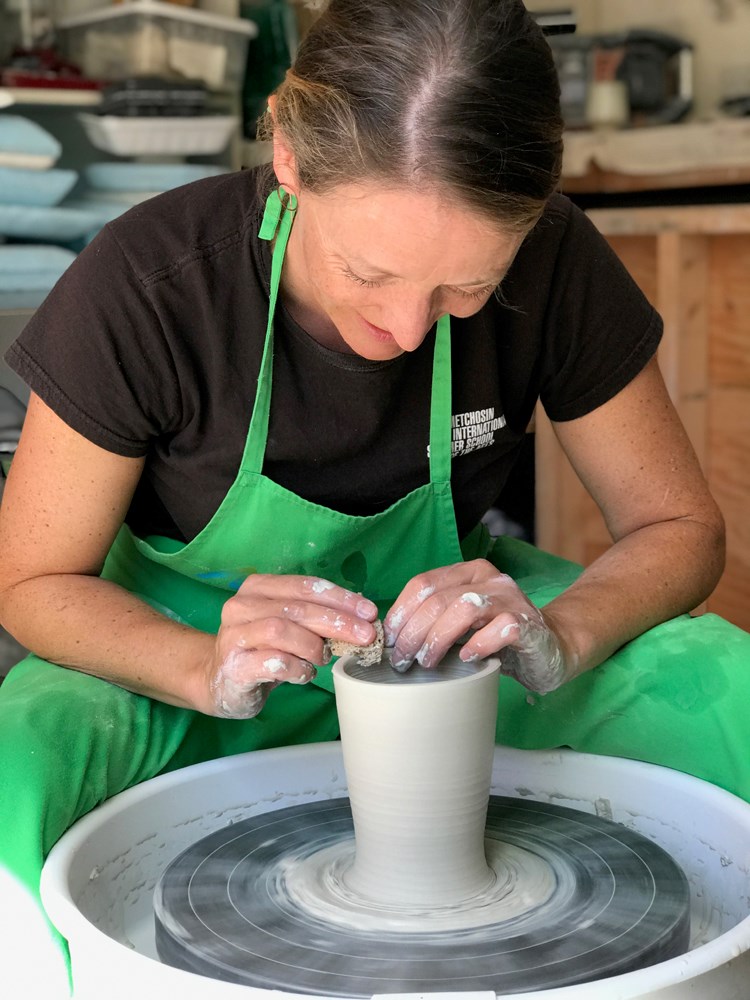
Ceramicist Emily Tolmie, has been throwing clay for decades; her work is a staple among ▀Ż─╠╔ńŪ°artists at markets such as Refresh and in popular tourist destinations such as the ▀Ż─╠╔ńŪ°Adventure Centre and Nootka Naturals at ▀Ż─╠╔ńŪ°Town Hub.
TolmieŌĆÖs signature mugs, often with the illustrations of bicycles and other recreation or nature motifs are often stamped with the townŌĆÖs name and make a perfect souvenir for those passing through. They are also a point of pride for locals who are validated by what weŌĆÖve always known: ▀Ż─╠╔ńŪ°is a hip place to be.
ŌĆ£I want to be here. This is the best place for me and my family to be. And I want to be making,ŌĆØ said Tolmie, who also substitute teaches a couple days a week at local elementary schools.
ŌĆ£It starts from me wanting to be in the place. When Craig and I came from Vancouver, we werenŌĆÖt even sure what we were coming to ŌĆö this wasnŌĆÖt, at the time, a place to come and ŌĆśmake.ŌĆÖ But now, I canŌĆÖt imagine being anywhere else.ŌĆØ
Tolmie, a mother of two (Mary is 10, and Violet is 7), is a graduate of the Emily Carr University of Art and Design, in Vancouver. She moved to ▀Ż─╠╔ńŪ°with her composer husband Craig Ducommun 13 years ago, and now spends hours upon hours in her home studio every week wedging, throwing, firing, and glazing her delightful designs onto pieces that can be used for special occasions and every day. Beyond her signature coffee mugs, she also makes gorgeous tumblers, travel mugs, pitchers, and even rubber-sealed jugs that can serve as growlers.
ŌĆ£I like the idea of living in a smaller town and doing something like functional ceramics. ItŌĆÖs about the maker passing along this thing to you, and you use this thing that I make. It becomes part of your family, your house, your dinner table ŌĆö thereŌĆÖs a local flair to it. ItŌĆÖs community,ŌĆØ said Tolmie, who teaches ceramics in her studio.
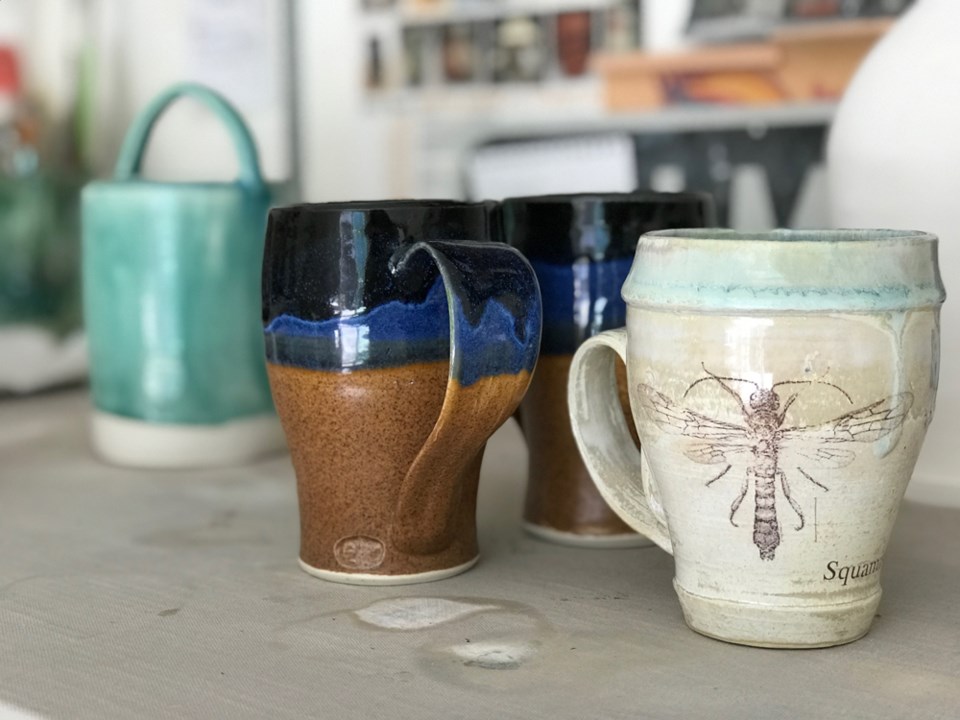
ŌĆ£This is a really good place for local handmade stuff. People just know you ŌĆö the town is small enough ŌĆö they just call when they need something.ŌĆØ
Lan Yao paints highly detailed works ŌĆö about three to six a year including commissions ŌĆö in fits and spurts. SheŌĆÖs a full-time artist who also enjoys the ▀Ż─╠╔ńŪ°recreation lifestyle, in particular, climbing. You can see the influence of landscapes in her art, which are rich colour washes that give the eye an endless number of vignettes to explore. There are both hidden and overt images co-existing within her massive paintings, pieces that range upwards of 6o inches by 48 inches.
Yao uses acrylic and polymer ink, sometimes diluting either medium with a bit of water to do a wash over the surface, giving her a jumping off point.
ŌĆ£Often IŌĆÖll just pour some water down, or pour some diluted paint directly onto the canvas. Then IŌĆÖll just play with that shape to get another shape, layer the washes,ŌĆØ she said, explaining that this early process can take a few days to a week. ŌĆ£From those shapes that emerge, I can get started.ŌĆØ
ŌĆ£I donŌĆÖt really paint in a traditional way where youŌĆÖre standing at an easel and painting, I kind of move around the piece a lot,ŌĆØ said Yao, who began her training in Chinese watercolour at age four when the family still lived in China. ŌĆ£I try to approach the canvas or wood panel like itŌĆÖs a page from my sketchbook, that way itŌĆÖs not as intimidating ŌĆō to stare at this massive empty space and think ŌĆśWhat am I going to do?ŌĆÖŌĆØ
After graduating as a printmaker with a fine arts degree from Emily Carr, Yao put down her paintbrush and took odd jobs before becoming a 3D modeler for an animation studio. It wasnŌĆÖt until she moved to ▀Ż─╠╔ńŪ°seven years later, that she picked up her brushes and put paint to canvas again.
ŌĆ£I hadnŌĆÖt painted for about seven years, but everything about living here truly inspired me,ŌĆØ she said. ŌĆ£The sky, the forest, whatŌĆÖs going on with the weather that day. If IŌĆÖm going for a hike or a run, and itŌĆÖs just rained and the light hits the trail a certain wayŌĆ” thereŌĆÖs just times that I look at something and I think ŌĆśoh, I have to paint thatŌĆÖ But not exactly that image per se ŌĆō itŌĆÖs more the colour, the smell of the air.ŌĆØ
You can see that Yao is a printmaker when you look at her paintings. Her process is relatively evident in all its layers, and exceptionally unique. The style and expansiveness of her work lend itself to suit ŌĆ£I canŌĆÖt remember whose idea it was [to turn YaoŌĆÖs paintings into fabric], IŌĆÖm pretty sure it was ValŌĆÖs idea. I always wanted to make fabrics and wallpaper design, thereŌĆÖs such an art to it.ŌĆØ
Dressmaking runs in the family for Nagy, but due to geography, the seamstress is self-taught.
ŌĆ£My grandmother taught my cousins to sew, but I didnŌĆÖt live close enough. I started out as a punk kid taking apart my clothes and sewing them back together ŌĆö I didnŌĆÖt know what I was doing. IŌĆÖd get hand-me-downs, shop at Value Village and IŌĆÖd want to make it my own somehow,ŌĆØ she said, laughing. ŌĆ£Finally, after years of not knowing what I was doing, I took a sewing class in high-school.ŌĆØ
After acing that, Nagy went on to get her diploma at Helen Lefeaux School ŌĆö a strict fashion design school in Vancouver where she learned, among other skills, pattern-building techniques.
Very much into the creative side of dressmaking, Nagy has a hard time qualifying her style, but her esthetic harkens to a time gone by. Whether itŌĆÖs the 1930s in Hollywood or the 1960s in South Africa, you can see hints of different eras in all her pieces, from the cut or drape of the fabric to the notions she uses. The quality of construction is consistently top-notch. Many of her creations are one-of-a-kind, which has a romantic appeal ŌĆö unless the dress you have your eye on doesnŌĆÖt come in your size.
ŌĆ£Because IŌĆÖve been working with vintage fabrics for so long, it can be a bit restrictive. Usually, I only have enough fabric to make one or two dresses in the same fabric. ThatŌĆÖs one thing I like about using the vintage fabric is you arenŌĆÖt creating a new demand, and typically the quality is higher, and thatŌĆÖs what appeals to me. I want to be able to create the same kind of quality and uniqueness in a modern fabric ŌĆö it can be a bit difficult sometimes,ŌĆØ she said, adding she is keen to offer a full range of size options.
This struggle is exactly what has led her to make her own prints.
ŌĆ£IŌĆÖm working toward creating my own prints as sustainably and local as possible. For example when I had LanŌĆÖs fabric printed it came from Austin Texas. I want to bring that closer to home, but I wonŌĆÖt compromise quality.ŌĆØ
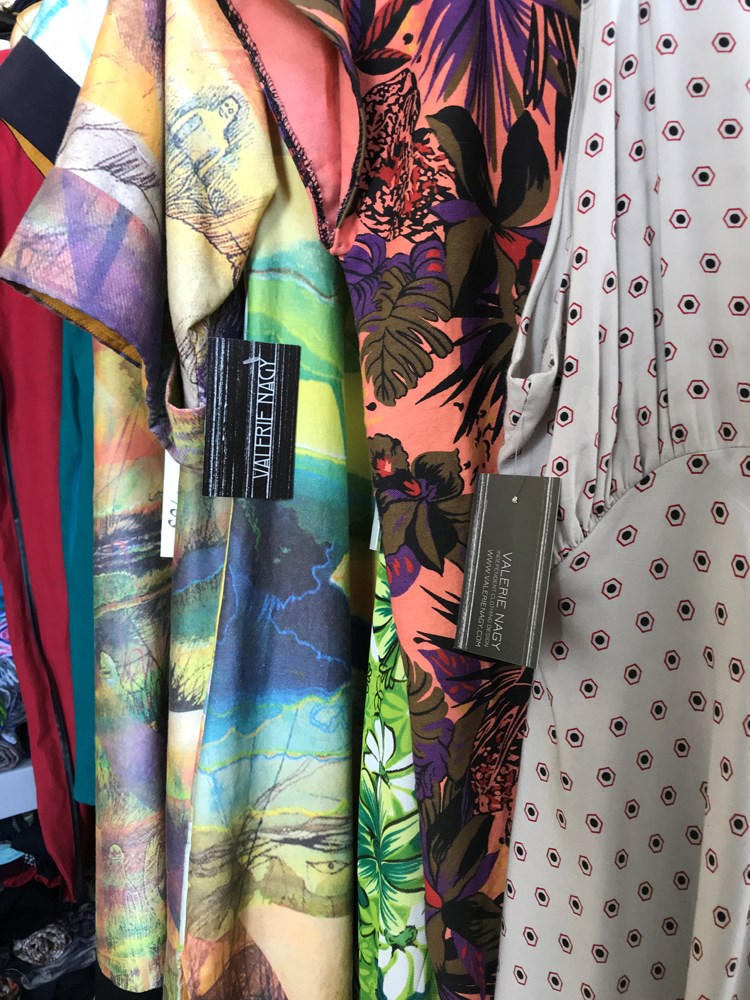
Nagy admits some of her favourite things to make ŌĆ£are the really, really time-consuming.ŌĆØ
ŌĆ£I obsess over my grandmotherŌĆÖs traditional Hungarian embroidery, and my other grandmother is an artist as well. Her art ŌĆö contrasting, punchy, different, and out there ŌĆö really gets me going,ŌĆØ she said, gesturing to the black and white images hanging on her studio wall.
ŌĆ£Basically IŌĆÖve been trying to channel my grandmas lately.ŌĆØ
Nagy says her inspirations ŌĆ£are sort of all over the placeŌĆØ at the moment.
ŌĆ£ThereŌĆÖs something new every day, thatŌĆÖs what keeps it interesting. But IŌĆÖm really trying to nail down a handful of designs that I really love, that are easy to wear and easy to clean. Once I can settle on exactly what those are, I really want to make full-size runs of things.
ŌĆ£I love making one of a kind things, but thereŌĆÖs something to be said for having something in peopleŌĆÖs sizes which is why IŌĆÖm moving more toward the printmaking.
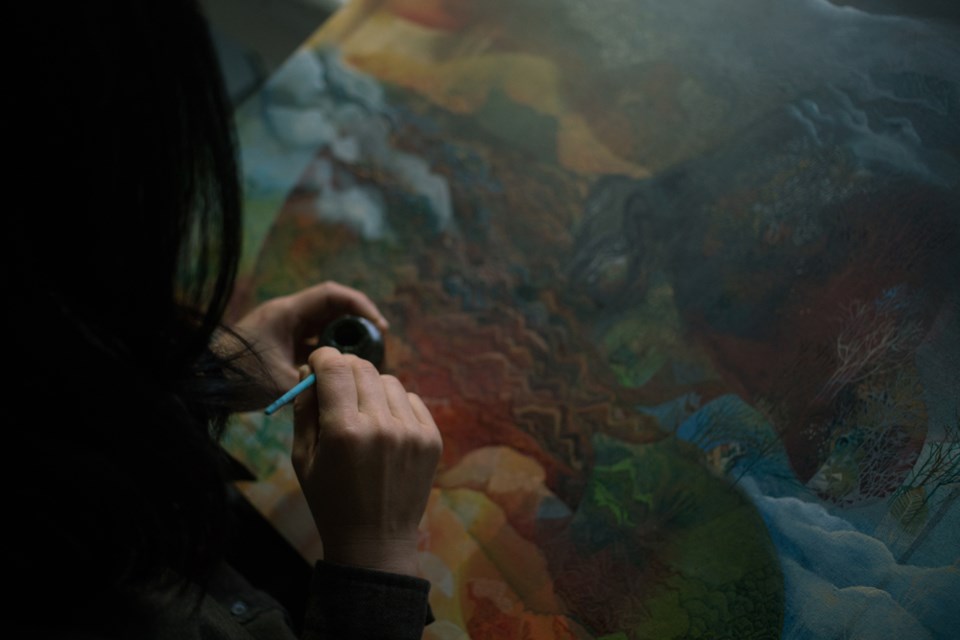
LanŌĆÖs paintings donŌĆÖt stick around that long, so we have to make sure we get a high-resolution image of it before it goes. But IŌĆÖve also been talking to a few other artists and there are so many things IŌĆÖd like to try ŌĆō including my own paintings and designs.
For now, it looks like thereŌĆÖs no shortage of collaboration opportunities. Yao said she is on board to do more work together.
┬ĀŌĆ£If she wants to make more, IŌĆÖd love to.ŌĆØ
Visit , , or find these artists by the same names on social media.
